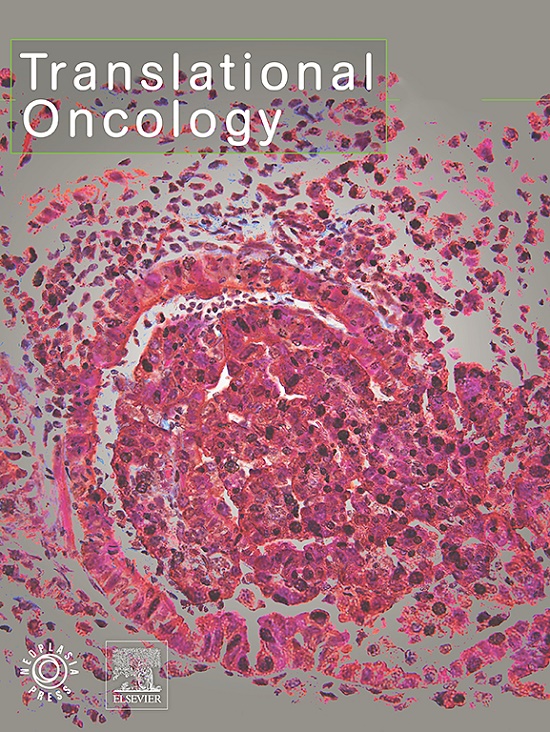CUL4B regulates thyroid cancer differentiation and treatment sensitivity by ubiquitinating ARID1A
IF 5
2区 医学
Q2 Medicine
引用次数: 0
Abstract
Background
Thyroid cancer (TC) is a prevalent endocrine malignancy with a generally favorable prognosis. However, dedifferentiation of TC poses a significant challenge, resulting in poorer patient outcomes and necessitating urgent attention. Cullin 4B (CUL4B), a scaffold protein involved in proteolysis and epigenetic regulation, has been reported to play an oncogenic role in many human malignancies, though its involvement in TC remains unclear.
Methods
The association between CUL4B expression and prognosis in TC patients was assessed using immunohistochemistry. RNA-seq was utilized to investigate the underlying molecular mechanisms, which were further validated through in vitro experiments. The target gene of CUL4B was identified, and the complete ubiquitination regulation process was described. The phenomenon of high expression of CUL4B in TC was explained by identifying that CUL4B-mediated regulation of the SWI/SNF complex.
Results
Our findings revealed that CUL4B expression was positively correlated with tumor progression and poor prognosis in TC. Mechanistically, overexpression of CUL4B promoted the progression and dedifferentiation of TC in vivo models. Crucially, we discovered that CUL4B drives dedifferentiation by promoting the ubiquitination of ARID1A within SWI/SNF complex, leading to decreased expression of the differentiation marker paired box 8 (PAX8). This loss of PAX8 contributes to the dedifferentiation process, ultimately resulting in the formation of anaplastic thyroid carcinoma (ATC). Moreover, silencing CUL4B increased the sensitivity of TC cells to MAPK inhibitors.
Conclusion
CUL4B was crucial in driving tumor advancement and inhibiting differentiation in TC by facilitating the ubiquitin-mediated degradation of ARID1A, underscoring its potential as a therapeutic target.
背景甲状腺癌(TC)是一种常见的内分泌恶性肿瘤,预后一般良好。然而,甲状腺癌的去分化是一项重大挑战,导致患者预后较差,亟需引起重视。Cullin4B(CUL4B)是一种参与蛋白水解和表观遗传调控的支架蛋白,有报道称它在许多人类恶性肿瘤中发挥着致癌作用,但它在TC中的参与仍不清楚。利用RNA-seq研究了其潜在的分子机制,并通过体外实验进一步验证了这些机制。研究发现了CUL4B的靶基因,并描述了其完整的泛素化调控过程。结果我们发现,CUL4B的表达与TC的肿瘤进展和预后不良呈正相关。从机制上讲,CUL4B的过表达促进了体内模型中TC的进展和去分化。重要的是,我们发现CUL4B通过促进SWI/SNF复合物中ARID1A的泛素化,导致分化标志物配对框8(PAX8)的表达减少,从而推动了去分化。PAX8 的缺失会促进去分化过程,最终导致甲状腺无弹性癌(ATC)的形成。结论CUL4B通过促进泛素介导的ARID1A降解,在推动TC肿瘤进展和抑制分化方面起着至关重要的作用,突出了其作为治疗靶点的潜力。
本文章由计算机程序翻译,如有差异,请以英文原文为准。
求助全文
约1分钟内获得全文
求助全文
来源期刊

Translational Oncology
ONCOLOGY-
CiteScore
8.40
自引率
2.00%
发文量
314
审稿时长
54 days
期刊介绍:
Translational Oncology publishes the results of novel research investigations which bridge the laboratory and clinical settings including risk assessment, cellular and molecular characterization, prevention, detection, diagnosis and treatment of human cancers with the overall goal of improving the clinical care of oncology patients. Translational Oncology will publish laboratory studies of novel therapeutic interventions as well as clinical trials which evaluate new treatment paradigms for cancer. Peer reviewed manuscript types include Original Reports, Reviews and Editorials.
 求助内容:
求助内容: 应助结果提醒方式:
应助结果提醒方式:


